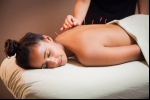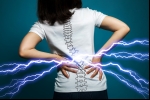Home » Blog
| Stem Cell, PRP, Acupuncture in Queens & Long Island, New York
Blog | Stem Cell, PRP, Acupuncture in Queens & Long Island, New York
Posted on: 21-Apr-2020 | No of views: 2007
Coronavirus is a serious situation and deserves your vigilance and attention -- but the deluge of information, precautions, and warnings can take a real toll on your mental health. Here are some tips on maintaining a happy medium: Pare down your sources of information. Find a few sources you trust, like the CDC or a community authority, and stick with them. Limit the frequency of your updates, be disciplined with your social media use, and know when to walk away.
Read more
Acupuncture is widely understood to be a non-traditional (not a traditional part of western medicine) treatment option for back pain or neck pain. While acupuncture is often not the first line of treatment sought for most back or neck problems, an increasing number of patients, as well as physicians and other health professionals are starting to use acupuncture as a means to reduce neck pain and back pain. Acupuncture is a form of Chinese medicine that can be traced back to at least 2,500 years. The general premise of acupuncture is that the body contains patterns of energy flow. The vital energy or life force of the body is referred to as qi (pronounced "chee"), and the proper flow of qi is considered to be necessary to maintain health.
Read more
Posted on: 13-Apr-2020 | No of views: 2102
New York state reached a tragic milestone this week: It now has more Covid-19 patients than any country in the world, aside from the United States. The state's total of 181,026 cases, as of April 11, is higher than Spain's (161,852 cases) and Italy's (152,271), countries with populations many times larger than New York. The disease is killing New Yorkers disproportionately. Of the 20,389 deaths in the United States, 8,627, or 42%, have occurred in New York. Its mortality rate is 4.7%, compared with 3.4% in the rest of the country, according to CNN's figures based on data from the Johns Hopkins University Center for Systems Science and Engineering.
Read more
Basic protective measures against the new coronavirus - Stay aware of the latest information on the COVID-19 outbreak, available on the WHO website and through your national and local public health authority. Most people who become infected experience mild illness and recover, but it can be more severe for others. Take care of your health and protect others by doing the following:
Wash your hands frequently, Maintain social distancing, Maintain at least 1-meter (3 feet) distance between yourself and anyone who is coughing or sneezing, Avoid touching eyes, nose and mouth, Practice respiratory hygiene
Read more
During this time as we have the Coronavirus Pandemic spread all around the world, stress and stress relief is a major cause for worry for people of all ages and walks of life. For this reason, looking for solutions for the problem is one of the most talked-about issues today. Cupping therapy is a potentially safe, non-invasive treatment that can help you release the stress and avoid the potential medical and psychological ailments that accompany stress. But, why is cupping effective? And, how can it help you? Read ahead to understand the therapy.
Read more
The coronavirus has changed how we work, play and learn: Schools are closing, sports leagues have been canceled, and many people have been asked to work from home. On March 16, the Trump administration released new guidelines to slow the spread of the coronavirus, including closing schools and avoiding groups of more than 10 people, discretionary travel, bars, restaurants, and food courts. How are you dealing with these sudden and dramatic changes to how we live? Are you practicing social distancing and are you even sure what that really means?
Read more
As the novel coronavirus continues to infect people around the world, news articles and social media posts about the outbreak continue to spread online. Unfortunately, this relentless flood of information can make it difficult to separate fact from fiction and during a viral outbreak, rumors and misinformation can be dangerous. Here at Live Science, we've compiled a list of the most pervasive myths about the novel coronavirus SARS-CoV-2 and COVID-19, the disease it causes and explained why these rumors are misleading, or just plain wrong.
Read more
Some symptoms of COVID-19, the disease caused by the new coronavirus, overlap with those of the common cold, allergies, and the flu. That can make it tricky to diagnose without a test. Even President Donald Trump asked pharmaceutical executives earlier this month if the flu vaccine could be used to stop the coronavirus. (The answer is no, but it's still good to get a flu shot to lower the chance that you get the flu and take up crucial healthcare resources.)
Read more
What is Coronavirus disease 2019? Coronavirus disease 2019 (COVID-19) is a respiratory illness that can spread from person to person. The virus that causes COVID-19 is a novel coronavirus that was first identified during an investigation into an outbreak in Wuhan, China.
Read more
Lower back pain makes it hard to fall asleep, and it can startle you awake at any hour of the night. To help you reclaim your sleep schedule, here is a simple guide to sleeping with lower back pain: Sleep on your side to relieve pain from a pulled back muscle - One of the most common causes of lower back pain is a pulled back muscle, which occurs when a muscle in your lower back is strained or torn as a result of being over-stretched. Symptoms from a pulled back muscle typically resolve within a few days, but the intense pain can make it difficult to fall asleep at night. Worse yet, the longer you lie in the bed, the more deconditioned your body gets and the worse your symptoms may become.
Read more
Love this Post? Spread the World






















